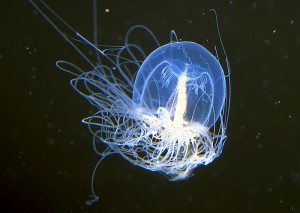
Posted on 04 June 2012 by RE Team
Immortality is one of the fascinations of humans. It may be a science fiction for us, it’s not a wonder for nature. But, nature has gifted immortality to one of the species already. The only known species in Earth with biological immortality is “Turritopsis nutricula“. This species is a type of Jellyfish can be of the size of a human nail (diameter of about 4.5 millimeters) when fully developed.

The immortal Turritopsis Nutricula
Immortality is one of the fascinations of humans. It may be a science fiction for us, it’s not a wonder for nature. But, nature has gifted immortality to one of the species already. The only known species in Earth with biological immortality is “Turritopsis nutricula“. This species is a type of Jellyfish can be of the size of a human nail (diameter of about 4.5 millimeters) when fully developed.
The Jellyfish has achieved the immortality through a biological cell development process, called transdifferentiation. Cell transdifferentiation is when the jellyfish “alters the differentiated state of the cell and transforms it into a new cell. With this process, the species can revert to the polyp stage, a sexually immature, colonial stage, after becoming sexually mature. Theoretically, this process can go on infinitely, effectively rendering the jellyfish biologically immortal. No single specimen of this Jellyfish has been observed for any extended period, so it is impossible to estimate the age of an individual.
This species was first discovered in 1883. However, it wasn’t until the 1990s that this unique ability to transform back into younger self once it has become sexually mature and has mated was uncovered. Many marine biologists and geneticists are now studying the jellyfish in order to determine how it is able to reverse its aging process.
Turritopsis is believed to have originated in the Caribbean but has spread all over the world. It is believed to be spreading across the world as ships are discharging ballast water in ports. Since the species is immortal, the number of individuals could be spiking. Are we on the verse of a a worldwide silent invasion??
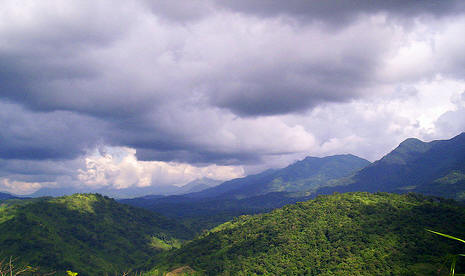
Posted on 04 June 2012 by RE Team
It is one of the unresolved mysteries of nature why this place named, Jatinga, in the North-East India region attracts birds from high sky to the ground on special weather conditions and the birds of various species fall prey to hunters and tribal villagers! Jatinga is a small village in the North-Cachar Hills of Assam where few thousands villagers of the Jayantia tribe live.
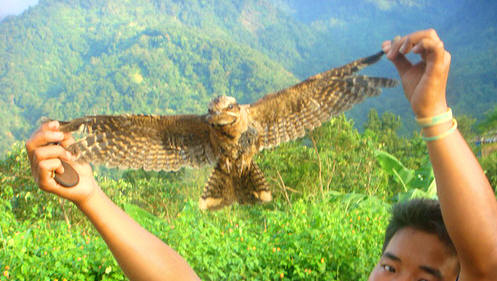
Jatinga Bird - Courtesy ZAHID AHMED TAPADAR @flickr
Jatinga was first inhabited by a tribe called Zeme Nagas in 1890 under the discretion of the Dimasa king who was the sovereign ruler. They were the first to witness the mystery when their camp fires attracted various birds. They considered this as the act of some evil spirits and the frightened tribes deserted the settlement. The Jaintias, who moved in around 1905 under their leader Lakhanbang Suchiang, tumbled upon the mystery while venturing into the valley at night with lightedtorches to round up stray cattle. The bamboo torches attracted showers of birds which the Jaintias regarded as a “gift of God”. The first mention of this mystery is found in the Wild Life of India (1957) by the British tea planter andorinthologist E.P. Gee. “The whole thing is extraordinary” Gee wrote. He notedthat the bird death took place only at this spot. Even when lights were put up in nearbyplaces, the phenomenon did not occur. He also noted that some conditions are necessary for the phenomenon to take place. In the following years, this phenomenon was referenced as “Birds committing suicide”.
This mysterious phenomenon takes place only in the later days of rainy season from September to November. During moonless and foggy dark nights between 6 p.m. and 9:30 p.m., flying birds come crashing to the ground with no prior warning whatsoever. Curiously, most of the doomed birds do not attempt to fly away after they land near the lights. They look dazed and disheveled, perhaps due to the trauma of the whole shocking experience. This is not confined to a single species but around 50 birds species fall prey to this nature’s mystery. Tiger Bittern, Black Bittern, Little Egret, Pond Heron, Indian Pitta and Kingfishers are some of the species to name.
Another interesting point is that, this phenomenon does not occur in the whole valley but only in a well-defined strip, 1.5 km long and 200 mts. wide. Invariably the birds come in only from the north and attempts at placing the lights on the southern side of the ride to attract the birds have failed. Another fact is that no long distance migratory bird gets attracted to the light traps. Some common resident birds like grouse, hornbills and imperial pigeons do not get caught at Jatinga. The directionless, hapless birds fall prey to the villagers after they land into the ground.

Jatinga Hills - Courtesy ZAHID AHMED TAPADAR @flickr
Various studies have been conducted to unravel the causes behind this phenomenon. But the root cause of this mysterious behaviour of the birds is not yet determined. Conservation groups and wildlife officials in India have taken steps to prevent this wanton killing of the birds, creating awareness in the illiterate villagers. Since then, the amount of birds killed have decreased by about 40 percent. However, there is still need of more research to unravel the real cause behind this un-natural phenomenon.
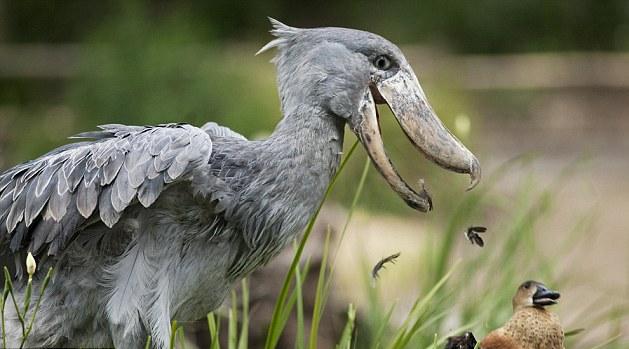
Posted on 13 May 2012 by RE Team
Nature is designed in a way to keep the balance of the eco-system properly.It has created Predator and Prey to keep the balance only. The Predator never hunts for just fun, it makes a kill only when needed. The exception is only human beings. They kill for just fun and the balance is completely lost now. In this article we are putting some wonderful examples captured by photographers where predator is not harming the prey at all when the predator is not in need.
Photographer Michel Denis-Huot captured some amazing pictures on safari in Kenya’s Masai Mara in 2009. These pictures depict how three cheetah examined, licked and played around a young oryx and finally let it go. Cheetahs were not hungry and they simply didn’t harm the prey at their hands!

Cheetah and Oryx - Predator friendship with Prey
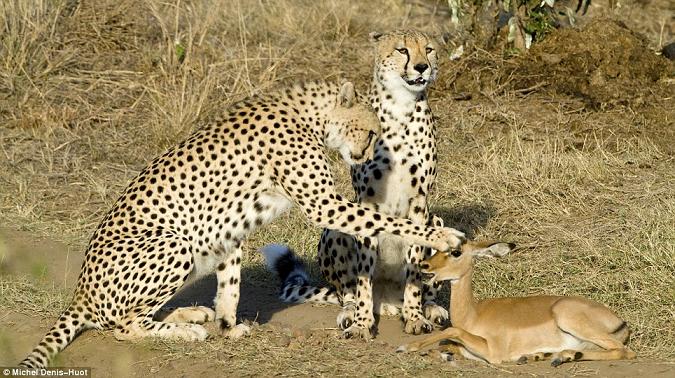
Cheetahs didn't harm the Oryx when not needed
Another example is of a Shoebill, a known predator bird. Photographer Mark Kay captured an unusual event in the Diego Wild Animal Park in the U.S. A small duck straying around a water hole suddenly picked up by a giant Shoebill. The Shoebill took the duck between its beak and surprisingly it just took the duck away from that area and released it. The bill didn’t harm the duck too. Probably the duck moved into the bill’s personal space and he didn’t like it. So just moved it. As it was necessary, he didn’t kill the duck and released to the nature!
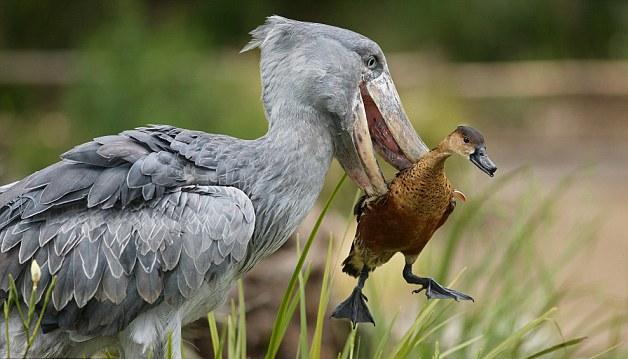
In the mouth of death

Duck released without any harm
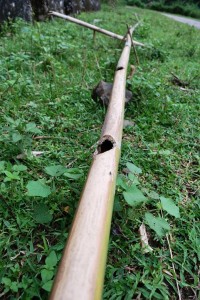
Posted on 04 June 2011 by RE Team
“Nature evolves” and “Technology advances”. When we say nature, we mean our whole planet, various organisms living in it, the sky, stars and so on. But if we look closely, Nature is nothing but an advanced technology, and each of those mentioned above are nature’s product. Nature runs on an extremely advanced technology that is out of human reach and understanding till now.
The product life cycle of nature such huge, ranging millions of years, that human can’t imagine to ever develop that technology. Human used the natural technology, tried to learn from it and developed their own technology. As normal human nature, they always intend to create techniques to achieve something in a fast and faster rate. So our technology is very attractive and produces products instantly. We use nature’s technology to tame nature itself.

Blend of pure nature with human technology - Irrigation used by some tribe
We have defeated nature and tamed it to some extend to fulfill our needs and luxury with our technology. So is our technology more advanced than nature’s? The simple answer is NO.
Recently we have realized how human technology is destroying the nature.Our technology is polluting the nature, in turn which is harmful to the human race. This realization is only partly true, because we may think we are destroying nature, but in reality, the nature’s technology is too robust. We may change the environment in the planet, but nature will still be evolving in its own way. Nature is highly adaptible it will take its own path. May be our whole human race and technology will be taken to an end by nature while changing the path.
We have imaginations of settling down in outer space in a different environment after a complete destroy of earth. But actually are we advancing that fast? Are we not producing destructive technologies in a much faster rate than such advancement? We will only realize our mistake in a natural way if we bring ourselves closer to the nature but not to the human technology.













Recent Comments